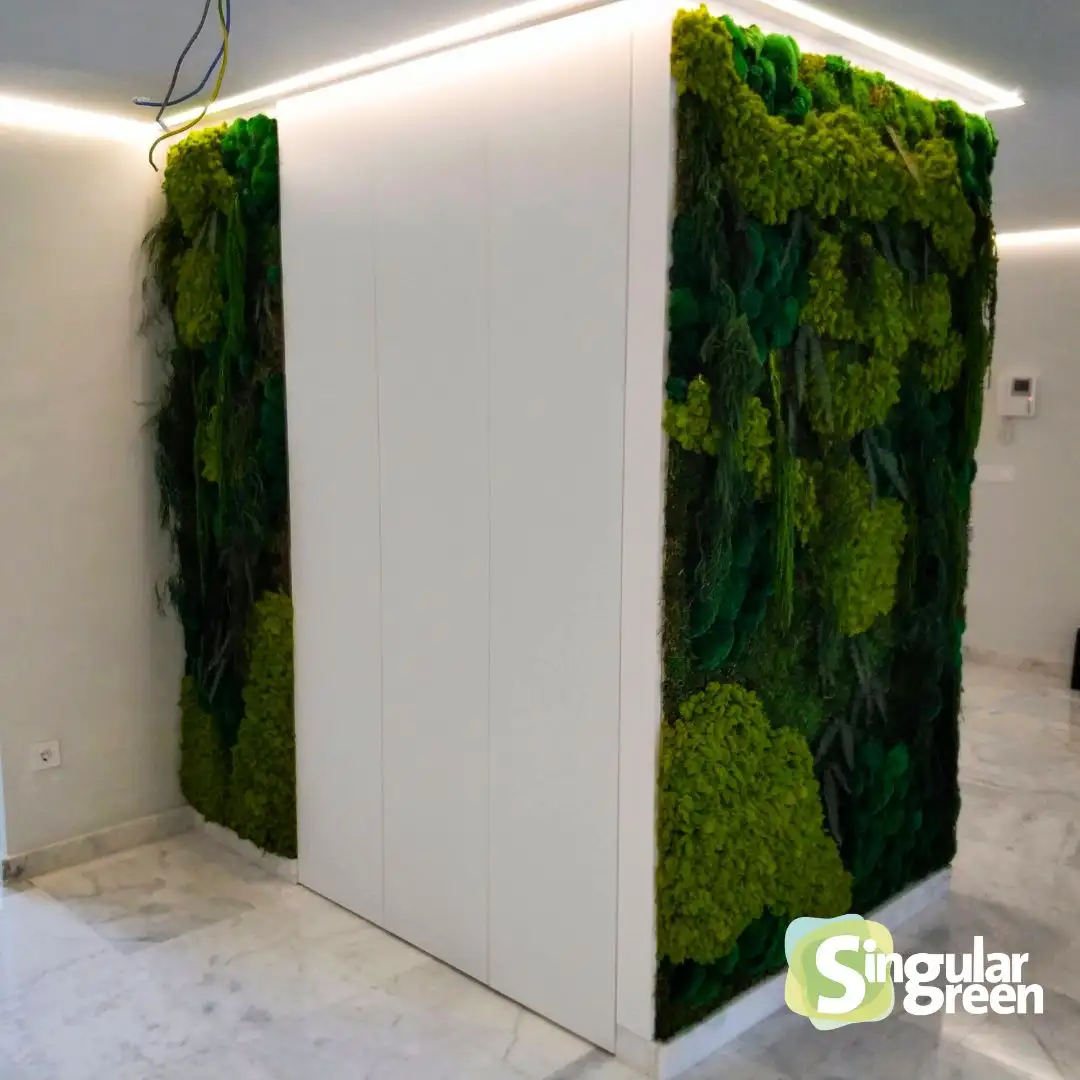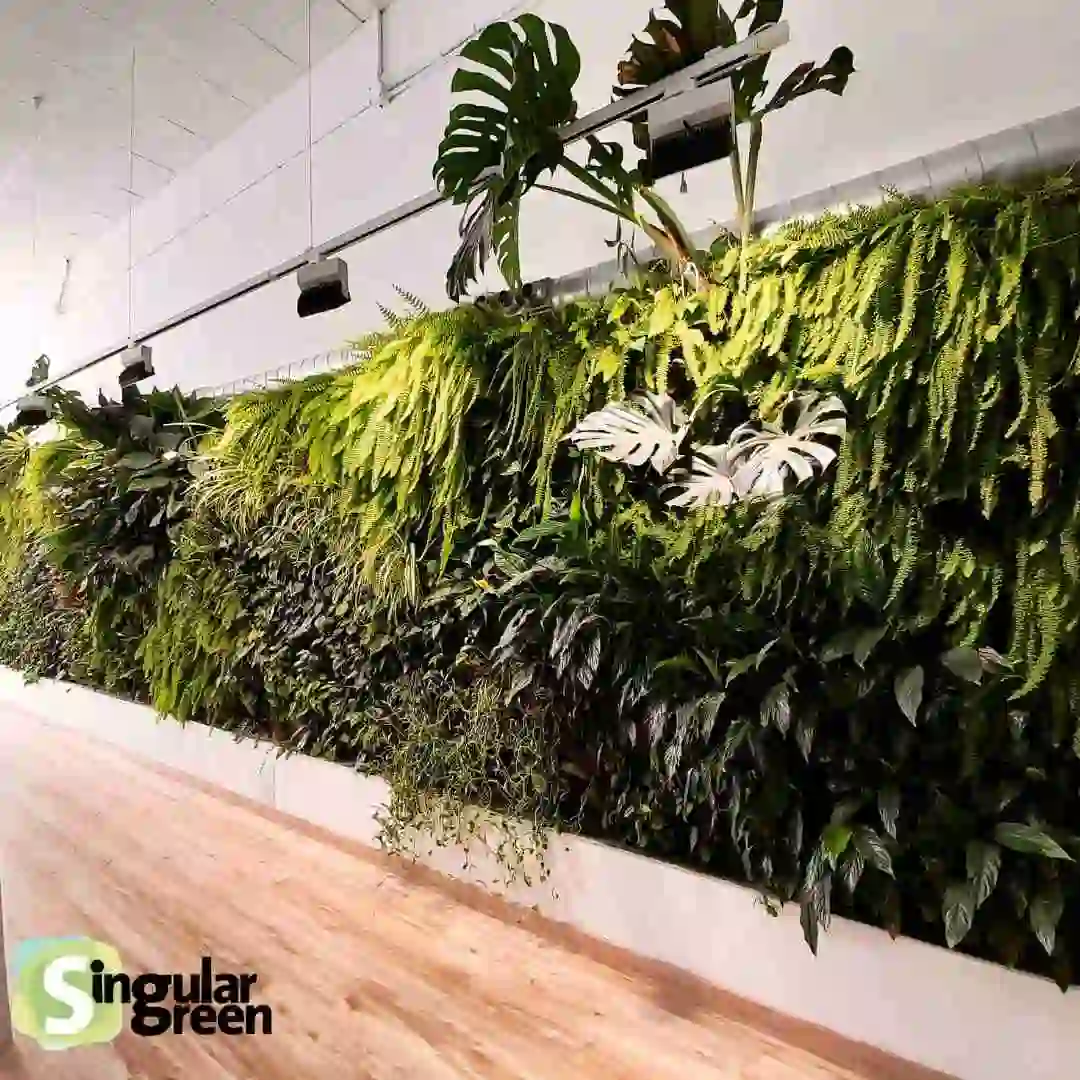What is the LIFEmyBUILDINGisGREEN project?
The LIFEmyBUILDINGisGREEN project was developed with the aim of creating nature-based solutions for educational buildings to minimise the effects of climate change.
This project has been carried out in cities such as Badajoz, Porto and Évora. In this case we will focus on the Gabriela Mistral school which was selected through the Rural Development and Sustainability Area of the Badajoz Provincial Council to carry out the implementation and subsequent monitoring of different nature-based solutions.
What happens in the Gabriela Mistral centre in Badajoz?
The ‘problem’ suffered by this province is the high temperatures and unrelenting heat waves, and the only solution for schools is to shorten the school day.
Faced with the reality of climate change that affects the whole world, we must adapt to it, but not in any way, we must adapt by mitigating its effects by making sustainable proposals such as shading, ventilation and increasing the presence of biodiversity.
Location of the building
The school is composed of two buildings that are connected by a glazed corridor oriented East-Southeast, so it receives a lot of sunlight during the whole school period.
With the help of the Cartif Foundation and the Instituto de Ciencias de la Construcción Eduardo Torroja (CSIC), a sunlight analysis of the school was carried out, and depending on its orientation and volumetry, it was possible to study how to incorporate these shading elements as an effective main measure to reduce high temperatures.
Nature-based solutions in educational buildings: CEIP Gabriela Mistral
Following this study, the following nature-based solutions (NBS) were proposed for both exterior and interior:
Outdoor SBN:
Extensive green roofs of various systems. Recycled aggregates were used as part of the substrate, or rock wool, combined with roofs resolved with elevated trays to generate cold roofs. These canopies can be visited and were designed so that pupils could get involved in their care and carry out activities.
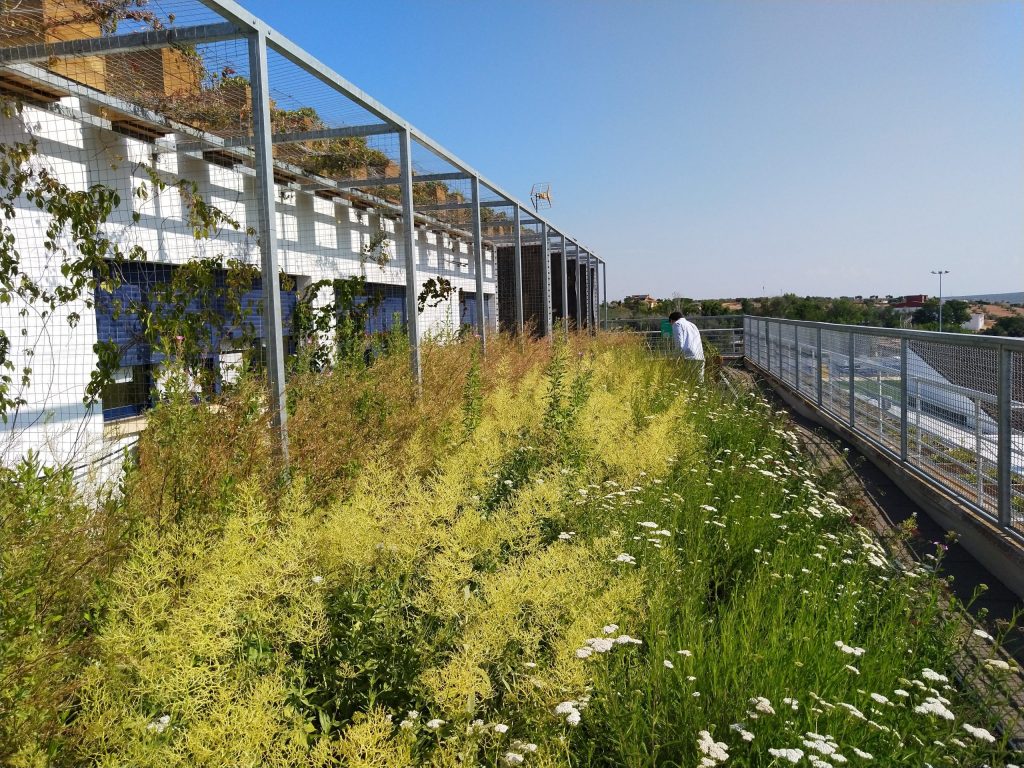
Vegetable facade by manufacturing a structure has been created as a kind of planter that serves as a support for the plants that generate surplus.
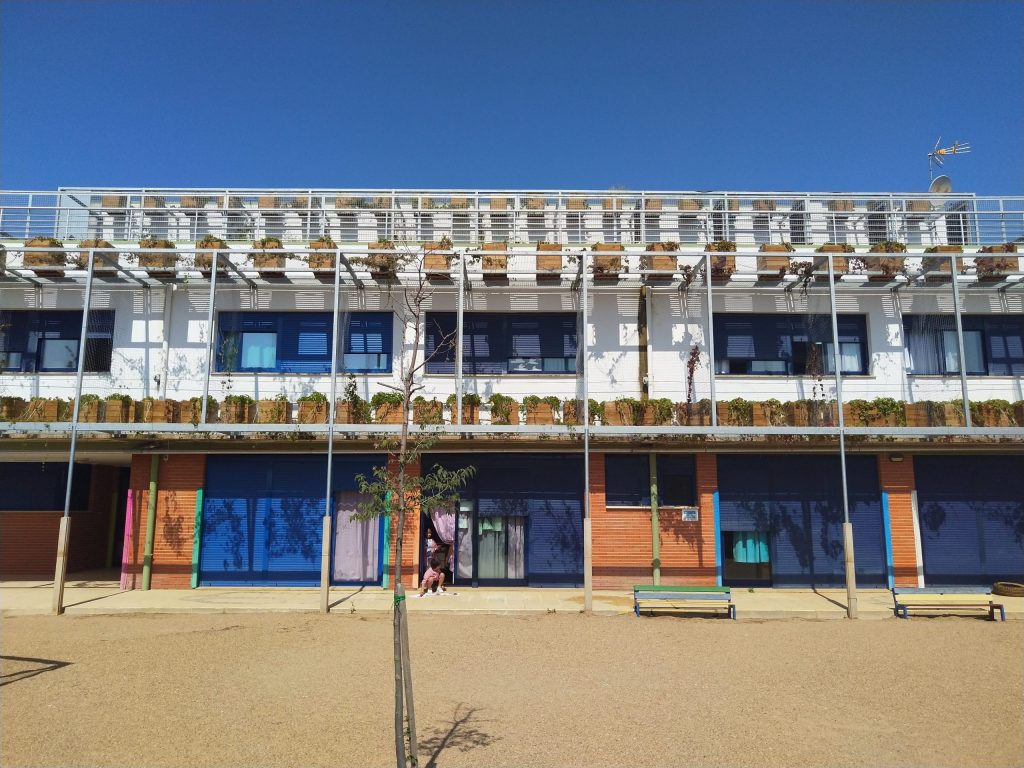
Green pergolas: as with the green façade, the structures were installed in the middle of the courtyard to again create a shaded area.

Drainage soils with vegetation so that the flow of rainwater is not fed directly into the municipal sewage systems, but is filtered into the ground.
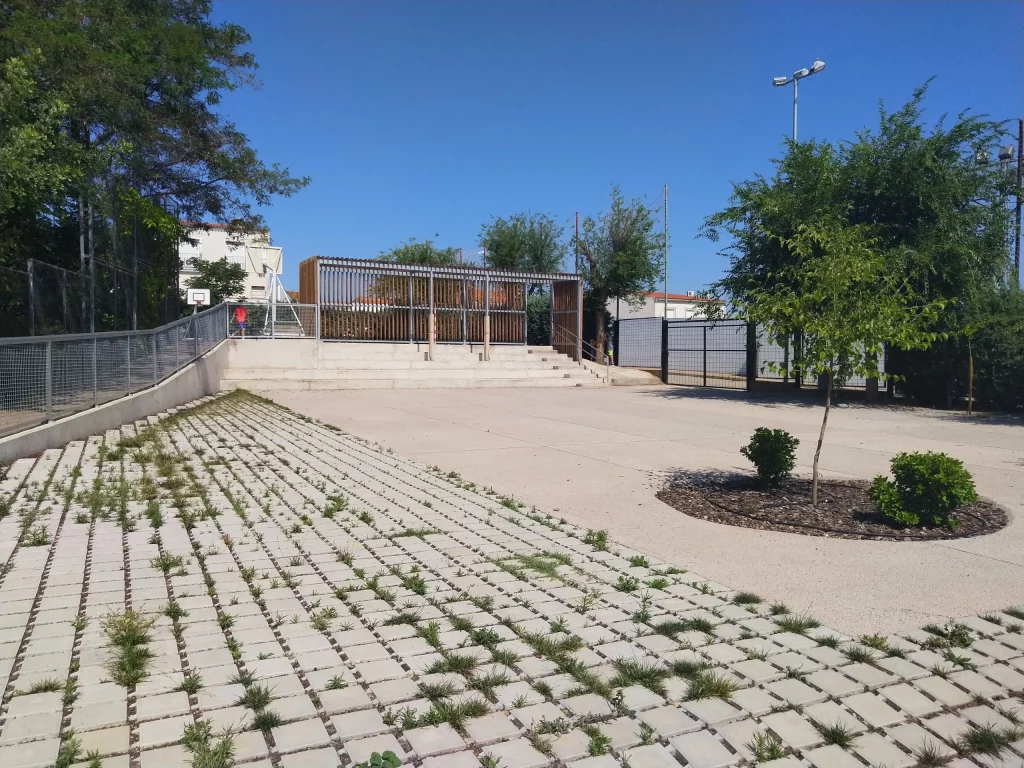
Indoor SBN:
- Vertical garden: the aim of this solution was to cool the environment as the plants carry out evapotranspiration and absorb CO2 as well as adding aesthetic appeal to the corridor.
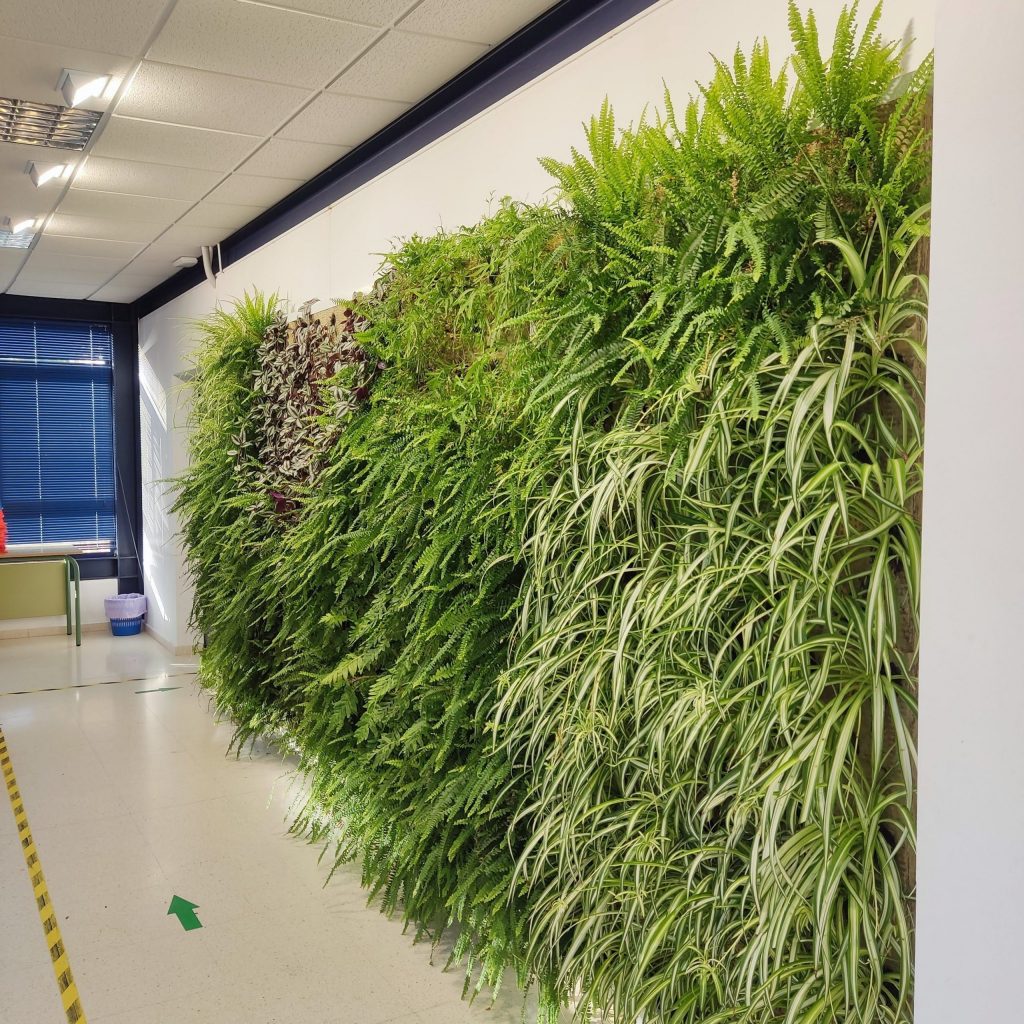
Monitoring of Nature-Based Solutions in educational buildings.
This project not only consisted of installing the nature-based solutions, but also of monitoring them. The technology centre cartif has been in charge of this task, recording data on the behaviour of the nature-based solutions once they have been installed in the centre. Data was collected from both inside and outside the building.
Inside the classrooms, temperature, humidity and CO2 data were taken, while outside, temperature values were taken from roof surfaces. In addition, thermographic cameras were used to record images of the exterior of the façades.
Results obtained
In the first year of monitoring the building, we observed a decrease of between 8 and 11% in temperatures inside the areas of action compared to the original temperatures. The following table shows the temperature difference before and after the implementation of the nature-based solutions.
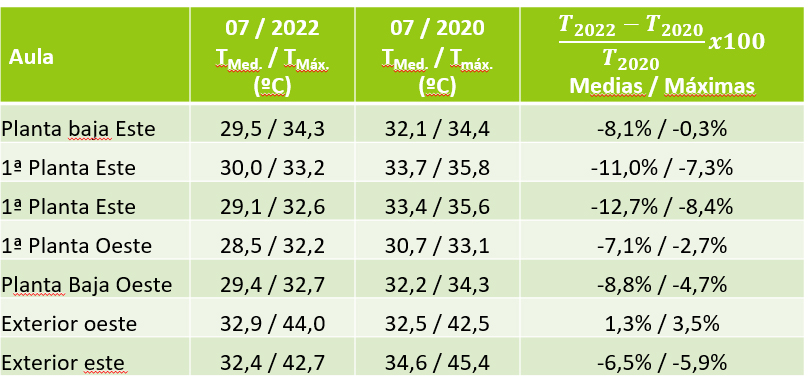
The thermographic images show for example the temperature differences between conventional roofs with a gravel finish, where temperatures reach up to 48°C, and laid green roofs, where surface temperatures drop to 29°C.
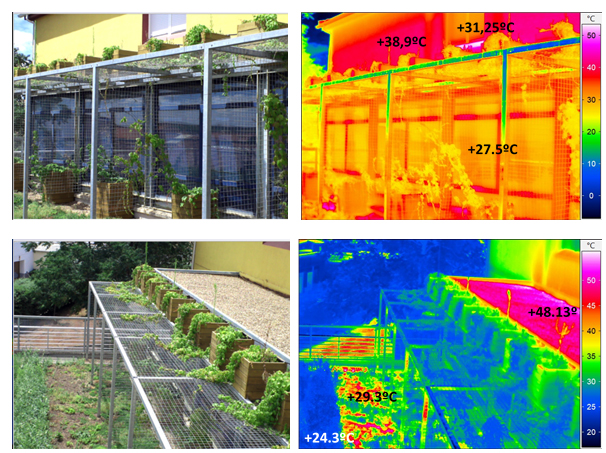
In terms of rainwater management, it can be seen that after the implementation of the Nature Based Solutions there is an increase in rainwater harvesting.

After the installation of the nature-based solutions and data collection, it only remains to determine the suitability of these SBNs for the adaptation of schools to combat climate change, as opposed to other measures such as the installation of artificial cooling, while taking into account the psychological benefits for the population.






